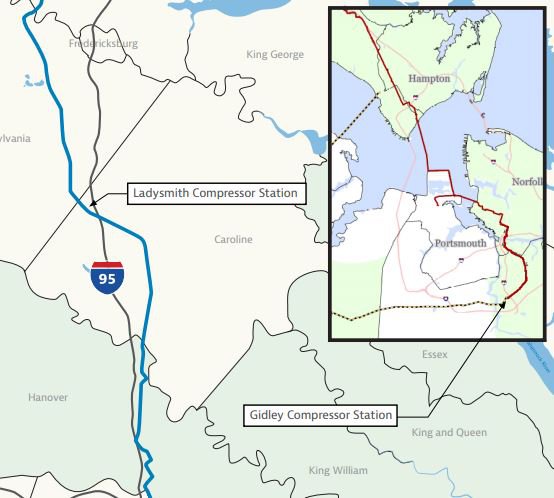On October 20, 1994, rising floodwaters from the San Jacinto River in Houston, Texas, caused a pipeline to break open, allowing gasoline to gush out and the river to catch fire. Such flooding is increasingly likely as the effects of climate change take hold, and yet, in the quarter century since that disaster, the federal government has implemented no new regulations to ensure that oil and gas operators are adequately preparing for the risks from more frequent and intense floods caused by the climate crisis.
In April 2019, the U.S. Department of Transportation’s Pipeline and Hazardous Materials Safety Administration issued an unenforceable notice reminding pipeline operators that severe flooding still threatens the integrity of their infrastructure. Similarly, prompted by chemical disasters during recent hurricanes, the U.S. Chemical Safety and Hazard Investigation Board (CSB) alerted industrial facilities of the potential chemical disasters that could be caused by extreme weather this hurricane season. But again, nothing was required of such facilities since CSB has no regulatory authority, and the U.S. Environmental Protection Agency during the Trump administration has been openly hostile to stronger regulations to prevent such disasters.
With the threat of worsening floods from climate change, such as the recent flooding from Tropical Storm Isaias, pipelines are riskier than ever. In addition to the risk extreme weather poses to people’s health and homes, flooding can cause or exacerbate pipeline failures and chemical disasters, spreading hazardous chemicals through contaminated water. In 2019, CPR explored the threat of toxic floodwaters in Hampton Roads, Virginia, finding that many hazardous industrial facilities are located in socially vulnerable communities prone to flooding. Hampton Roads residents already brace themselves for the possibility of losing their cars or sustaining damage to their homes during major storms. But they also need to beware the threat from toxins that could be looming in the floodwaters. When toxic flooding occurs in these communities, low wages, poor access to health care, and lack of transportation can make the health threats even worse.
Pipelines often run through coastal areas that already have more hazardous facilities than inland regions, and Hampton Roads is no exception. Comparing CPR’s research findings with the Eastern Virginia Anti-Pipeline Education Map reveals that the Southside Connector pipeline passes through ten densely populated, socially, and environmentally vulnerable census tracts. These tracts are home to 185 hazardous facilities at risk of flooding. The “blast zone” area around the Southside Connector pipeline includes hundreds of homes and Thurgood Marshall Elementary School.
Despite the risks from pipelines that are already in the ground, Virginia Natural Gas wants to create more vulnerable pipeline infrastructure, including the dangerous and polluting Gidley Compressor Station in Chesapeake, part of a massive new pipeline project called the Header Improvement Project. Although the project has faced recent delays, it may still be built in the future. In a striking example of how environmental injustices are compounded, the location of the proposed compressor station is right beside a Chesapeake census tract CPR found to be the most vulnerable to toxic floodwaters in the entire region. The Gidley Compressor Station is proposed for an area where 6,500 people live within a one-mile radius. Sixty-five percent of the population is Black or Hispanic, and 31 percent have a median-household income of less than $50,000. Local activists reached out to Chesapeake residents who live near the proposed site and found that many of them had no idea that a compressor station was even a consideration.

Continuing all the construction of such natural gas infrastructure is unconscionable without enforceable standards requiring chemical manufacturers and pipeline operators to adequately prepare for the risks from extreme weather. The potential for disaster is particularly worrisome in Hampton Roads, which has the highest rate of sea-level rise on the entire Atlantic seaboard. Researchers predict that three feet of sea level rise — a likely scenario within this century — could impact up to 176,000 people in Hampton Roads. Climate change will bring more frequent and intense storms and hurricanes to the region, increasing the threat of flooding from heavy rainfall and storm surge.
Finally, although industry players tout the fact that natural gas emits less carbon dioxide than coal when burned, natural gas pipelines leak methane, a potent greenhouse gas that can warm the planet more than 80 times as much as comparable quantities of carbon dioxide. According to a 2018 study, domestic oil and gas operations leak 13 million metric tons of methane a year, enough to fuel 10 million homes. And the gas from the pipelines will do more than just warm the planet. Emissions from pipelines contain organic compounds that contribute to smog, as well as hazardous air pollutants like benzene, a known carcinogen. New pipelines and compressor stations bind us to greenhouse gas-emitting power sources for another 30 to 40 years. Those are years we cannot afford to waste.
Federal regulators must require existing hazardous facilities to do more to prepare for the threats from climate change, and state agencies should evaluate potential harms to already overburdened communities before allowing new ones to be built. We are proud to join with Mothers Out Front and other local advocacy groups in the fight against the Header Improvement Project and natural gas pipelines. Our research shows that vulnerable communities in Hampton Roads are at risk of toxic flooding, and the Header Improvement Project will only make things worse.
